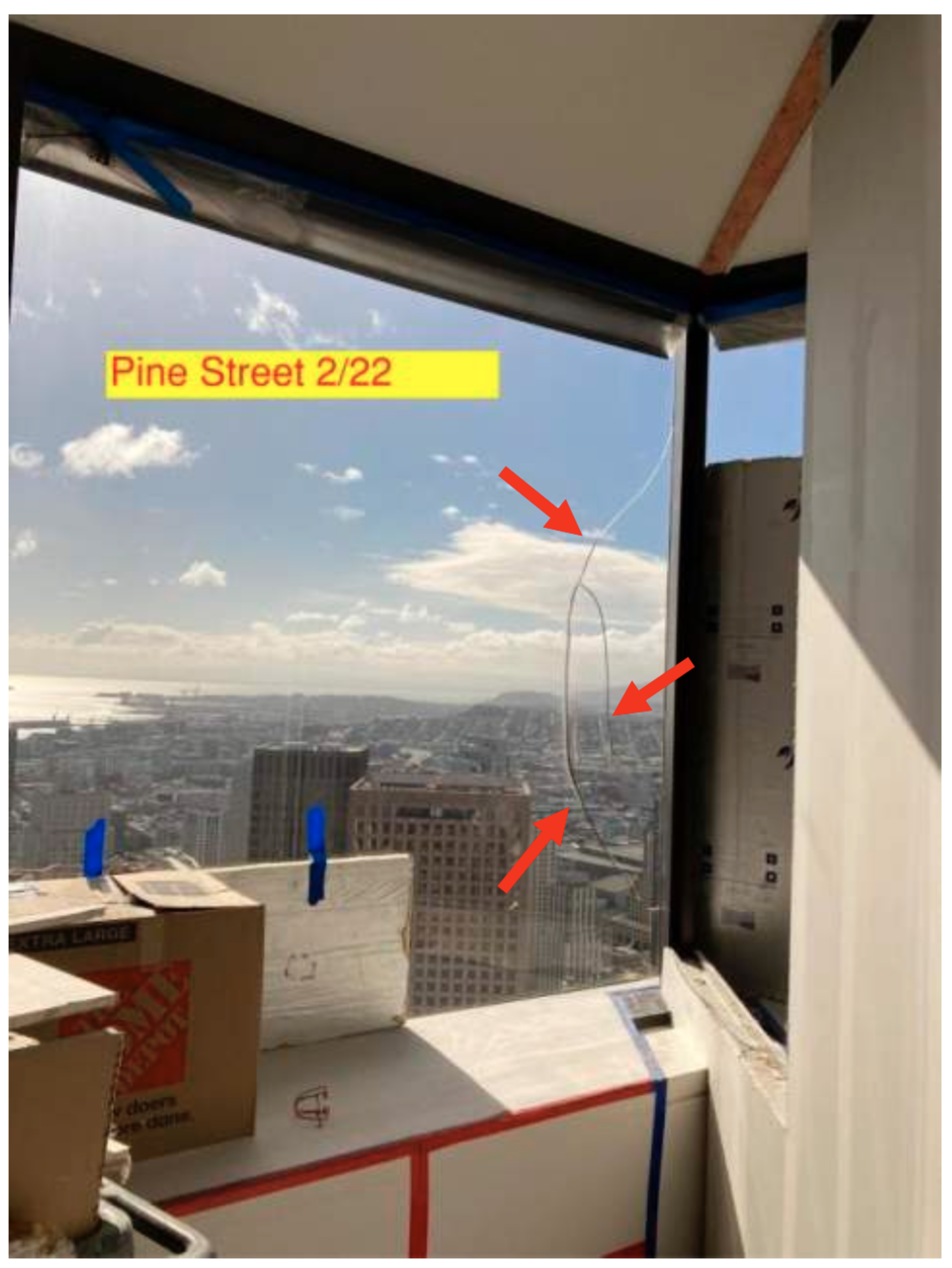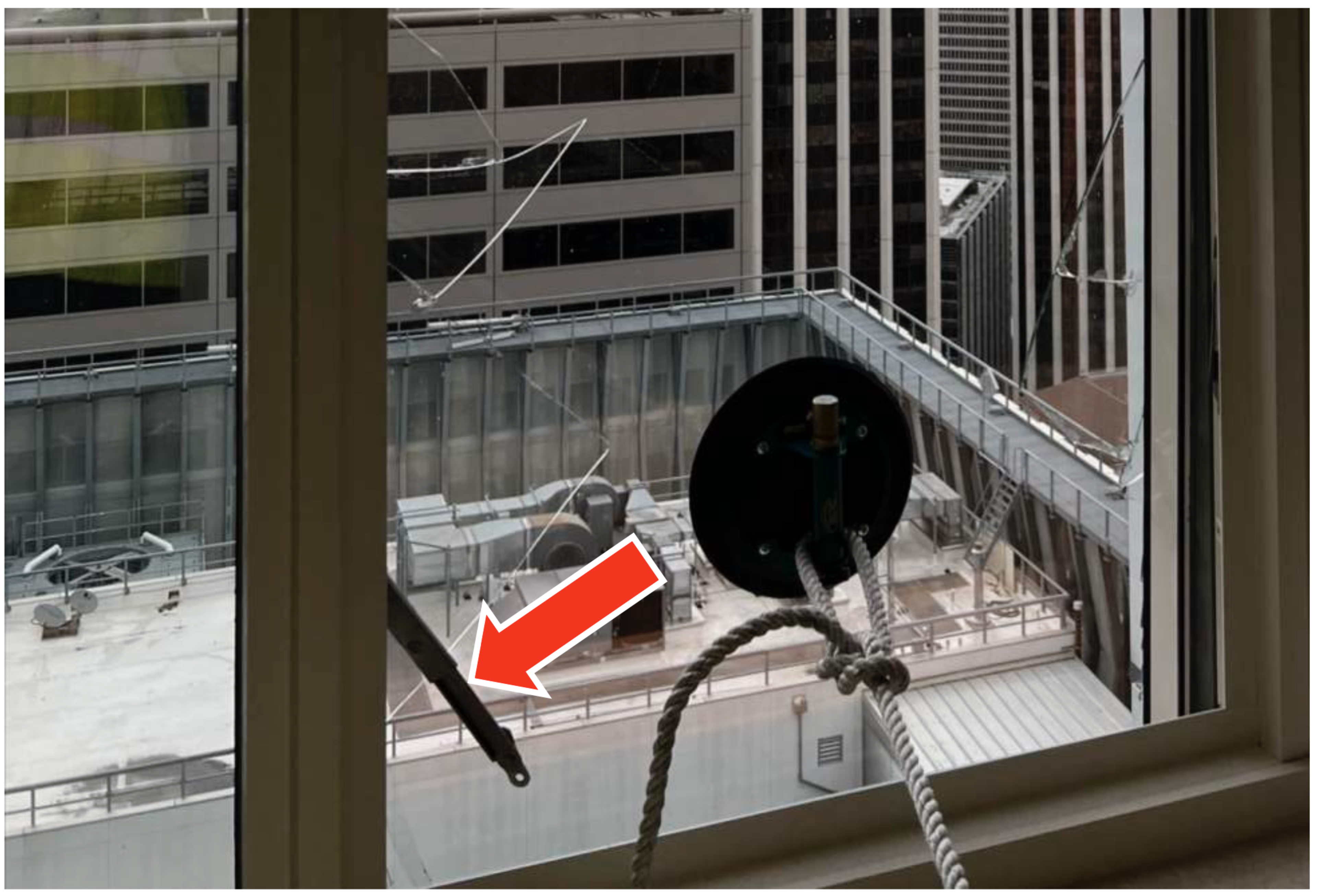Broken glass from high-rise windows rained down on Downtown San Francisco during wind storms last March. But rather than buckling under the pressure of powerful gusts, the vast majority of the window failures were likely caused by issues that predated the storm, some of which were known to the buildings’ management, investigators hired by the city have concluded.
The winds, which topped 77 mph during the March storms, exacerbated the existing issues and threw debris from seven Downtown buildings onto the streets, according to an investigator’s report presented at the San Francisco Building Inspection Commission Wednesday.
READ MORE: Glass Falling From Downtown San Francisco High-Rise
One high-rise had a history of glass breakages caused by building-material contamination, while managers at another tower had known about a window hardware issue for three years but failed to fix it, investigators found.
“The report indicates that the glass failures were largely preventable and were primarily caused by existing broken windows that had not been repaired,” a San Francisco Department of Building Inspection spokesperson said in a written statement. “It is critical that building managers identify, secure and fix broken windows immediately so they don’t endanger the public or cause additional property damage, especially before a large storm.”

In light of the findings, the department plans to inspect all 15-story-or-more buildings constructed since 1998 to identify window issues, the spokesperson said. Down the road, the department may consider asking for a local law change to update its facade-inspection program, Deputy Director of Permit Services Neville Pereira said during a presentation Wednesday.
Meanwhile, the department has issued citations for each of the seven buildings over the broken windows. The department confirmed that fixes were made at 580 California St. and 1390 Market St., according to its public complaint system. The violation cases for 555 California St., 301 Mission St., 350 Mission St. and 1400 Mission St. are still making their way through the city’s complaint process, with several set to have hearings related to the broken windows in the coming months.
READ MORE: SF Orders Inspections of New High-Rise Windows After Storms
In August, the department held a hearing regarding 50 California St., then fined the building and ordered the owner to fix the windows.
All of the buildings’ owners or managers declined to comment or did not reply to requests for comment.
Investigators with Wiss, Janney, Elstner Associates Inc. conducted the investigation presented to the San Francisco Building Inspection Commission Wednesday.
How the Glass Broke
The first reported incident of tumbling glass in San Francisco’s Downtown during the early spring storms came on March 14, when a large windowpane came dislodged from the 43rd floor of 555 California St., formerly known as the Bank of America Center. The window careened down to the street, prompting the San Francisco Fire Department to order nearby residents to hunker down.

Photos uncovered during the investigation show that the windows were broken as early as Feb. 21, 2023—weeks before the storms buffeted the building. That means the wind dislodged already-weakened windows on March 16 but didn’t break them, Pereira said.
The broken glass from 555 California St. was hurled into its neighbor, 580 California St., during the storm, according to investigators, who say the impact broke six panes at 580 California St.
READ MORE: Salesforce East, Millennium Tower Windows Fail in High Winds
A similar situation unfolded at 301 Mission St., also known as Millennium Tower. There, a window hardware issue had led to glass breakage in February 2020. But building management didn’t fix the issue, which was related to the stay arms that hold the windows in place, prior to the March 2023 storm, according to the report. When the March windstorm hit, a stay arm failed on the 49th floor, which caused the window to blow out, Pereira said.

Millennium Tower’s neighbor suffered at the expense of the deficiency. Debris from that broken Millennium Tower window likely smashed into at least some of the 17 panes of glass that broke at 350 Mission St., located across the street and known as Salesforce East.
The breakage at 50 California St. also likely occurred before the storm. While investigators were less sure of the cause, they concluded that heat stress brought on by insulation pressing up against the glass likely weakened the glass.
The building at 1400 Mission St. has had a history of glass breakages, Pereira said. Its facade glazing was contaminated with nickel sulfate, which can cause the pane to break. In fact, there had been previous spontaneous window breaks at the building due to the contamination dating back to 2015, the report stated. Investigators concluded that the building’s window that crashed down broke before the March storms.
As the number of falling glass incidents piled up throughout March 2023, local officials became increasingly alarmed. By the end of the month, Mayor London Breed signed an emergency declaration, spurring the investigation into the broken windows.
